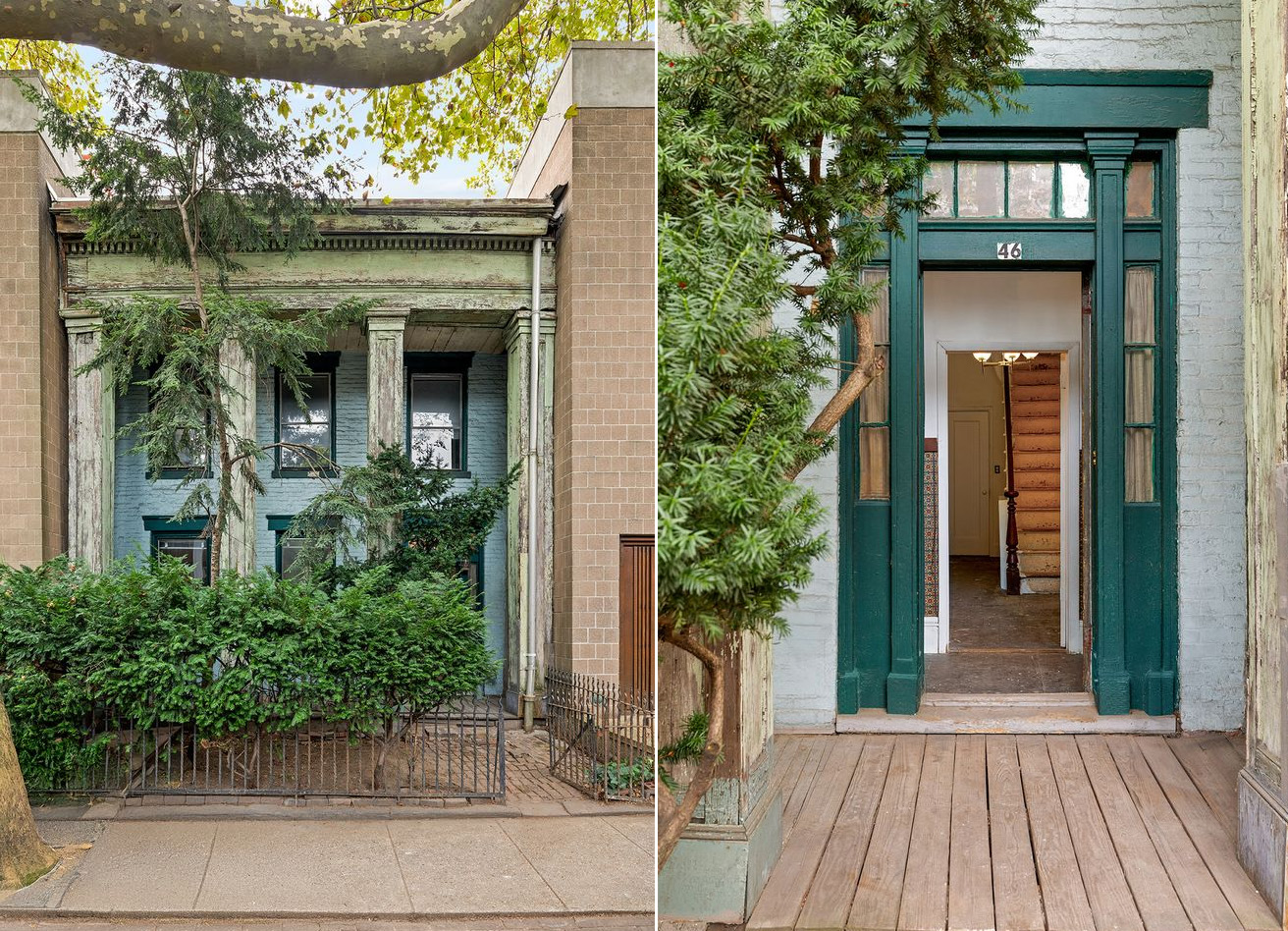
"The sole survivor of a colonnade row, this Willow Place dwelling hasn't been on the market since the 1960s. The simple wooden columns on the facade of 46 Willow Place give a hint to its origins, as does a more intact row across the street. Listing photos show some details remain from its 1840s construction date, like wide-plank floorboards and a marble mantel, while there are also some later updates like a Deco-era bath."
"Within the Brooklyn Heights Historic District, the 21-foot-wide dwelling was once part of a row built in a style that peaked in popularity in New York in the 1830s and 1840s. The impressive houses known as LaGrange Terrace on Lafayette Street in Manhattan might be the most well-known example of a colonnade row in New York City, but Brooklyn had its share of examples of the popular style."
"Advertisements for houses in colonnade rows in Brooklyn Heights, Cobble Hill, Clinton Hill, and Williamsburg pop up in local papers in the early 19th century. This house, its lost neighbors, and the row across the street at 43 to 49 Willow Place likely date to the 1840s. In 1853, some houses in the row made the news when a health inspector found "nuisances of the worst description," according to a Brooklyn Daily Eagle report, with yards and privies in "offensive condition.""
46 Willow Place is a 21-foot-wide Brooklyn Heights dwelling built in the 1840s as part of a colonnade row and now stands as the sole survivor of its original row. The facade retains simple wooden square columns and interior details including wide-plank floorboards and a marble mantel, while some rooms feature later updates such as a Deco-era bathroom. Historical maps show the row intact in 1929, but by circa 1940 only Nos. 44 and 46 remained; the vacant lots were replaced by three modernist houses in the 1960s. Nineteenth-century advertisements document colonnade rows across Brooklyn neighborhoods, and an 1853 health inspection cited severe nuisances in some houses. The property has not changed hands since 1969 and lies within the Brooklyn Heights Historic District, with original columns needing restoration.
Read at Brownstoner
Unable to calculate read time
Collection
[
|
...
]